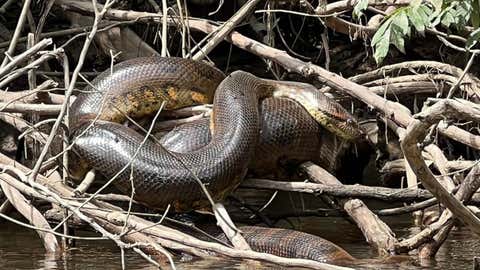
A team of scientists exploring the Amazon for a documentary on oil drilling with National Geographic uncovered a new species of giant anaconda. Professor Bryan Fry from The University of Queensland, who led the expedition, discovered the northern green anaconda in the Bameno region of Baihuaeri Waorani Territory in the Ecuadorian Amazon.
The team, accompanied by indigenous hunters, embarked on a 10-day expedition to study these sacred creatures, encountering anacondas up to 6.3 meters in length. Some reports even suggest anacondas in the area that measure over 7.5 meters long and weigh around 500 kilograms.
The newly identified species, Eunectes akayima, diverged from the southern green anaconda nearly 10 million years ago, displaying a genetic difference of 5.5%. The collaboration with the Waorani community was integral to the research, with the indigenous collaborators recognized as co-authors of the study.
However, these anacondas and other species in the Amazon face threats from deforestation, habitat degradation, fires, drought, and climate change. More research is crucial to protect these endangered species and their ecosystems.
The findings have been published in MDPI Diversity, showcasing the importance of conservation efforts in the Amazon.

